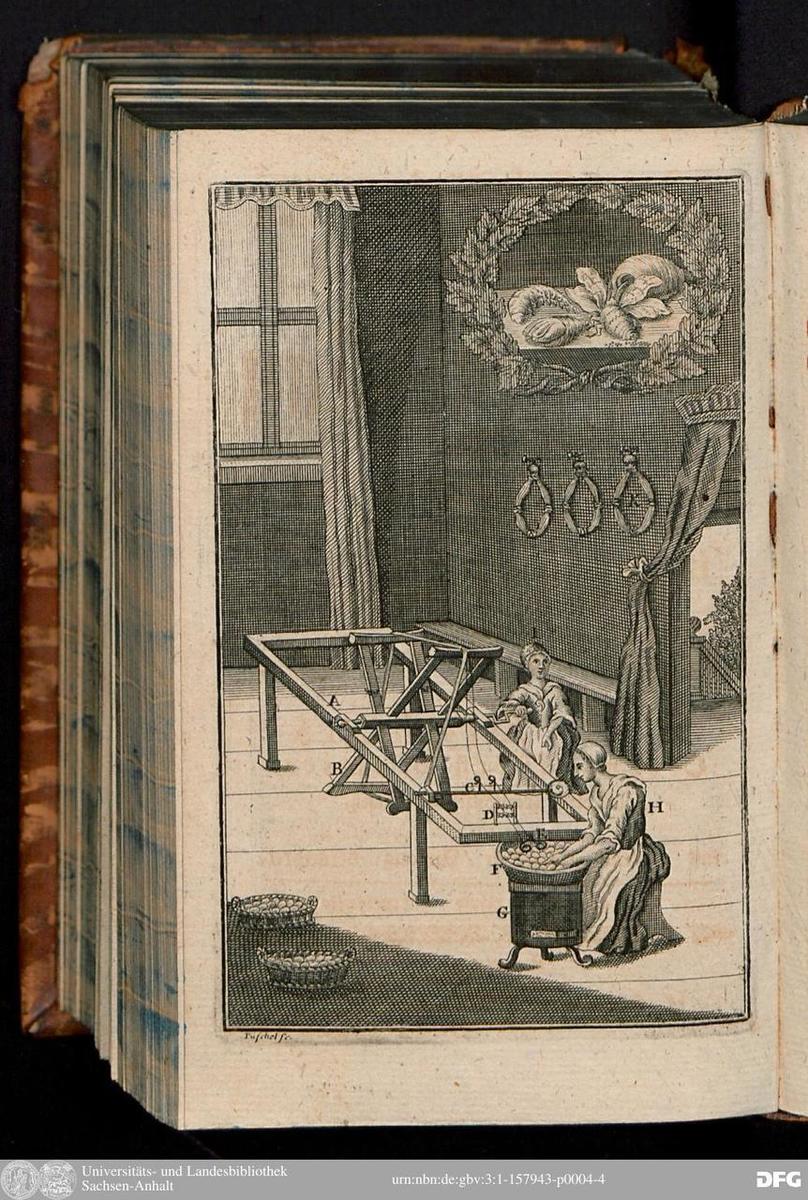Frontispiece to Jean Aunant’s Gründliche Anweisung zum Seidenbau (1749)
Abstract
Prussia started making initial efforts to cultivate silk at the end of the seventeenth century. This included raising silkworms, growing mulberry trees, and ultimately processing silk. The knowledge needed to carry out this process came mainly from French religious refugees, the Huguenots, who sought refuge in Prussia.
The frontispiece to Jean Aunant's Gründliche Anweisung zum Seidenbau [Thorough Instructions in Sericulture] (originally published in French in 1744 as L'art de planter et de cultiver les meuriers blancs) shows two women using a reel to process silk. Page 152 includes as explanation of the device, which was used to wind up silk threads and bring them into manageable form.
Source
Description of the Reel. [Excerpt from page 152]
A. The frame on four legs.
Translation: Kathleen Dell’Orto

B. The reel, part of which can be laid down to take off the silk thread.
C. The rod, which is moved back and forth by the plate and its crank.
D. The roller over which the silk thread runs.
E. The rings or holes through which the silk thread is first passed, and which move away over the pot.
F. The pot, filled with cocoons.
G. The heater.
H. The person who cleans the cocoons, searches for the threads, and attaches them.
I. The person who turns the reel.
K. The silk thread that has been taken off and prepared for sale.
Source: Jean Aunant, Gründliche Anweisung zum Seidenbau und dazu gehörigen Maulbeer-Baum-Plantagen, wie solche in Deutschland anzulegen: alles aus eigener Erfahrung aus dem Franz. übers. Nebst einem nützlichen Anhange. Frontispiece. Leipzig: Groß 1749. Universitäts- und Landesbibliothek Sachsen-Anhalt. Available online at: http://digitale.bibliothek.uni-halle.de/urn/urn:nbn:de:gbv:3:1-157943
Further Reading
Silke Kamp, Die verspätete Kolonie: Hugenotten in Potsdam 1685-1809 [Online edition]. Berlin: Duncker & Humblot, 2011.